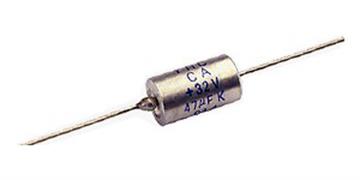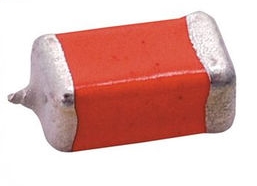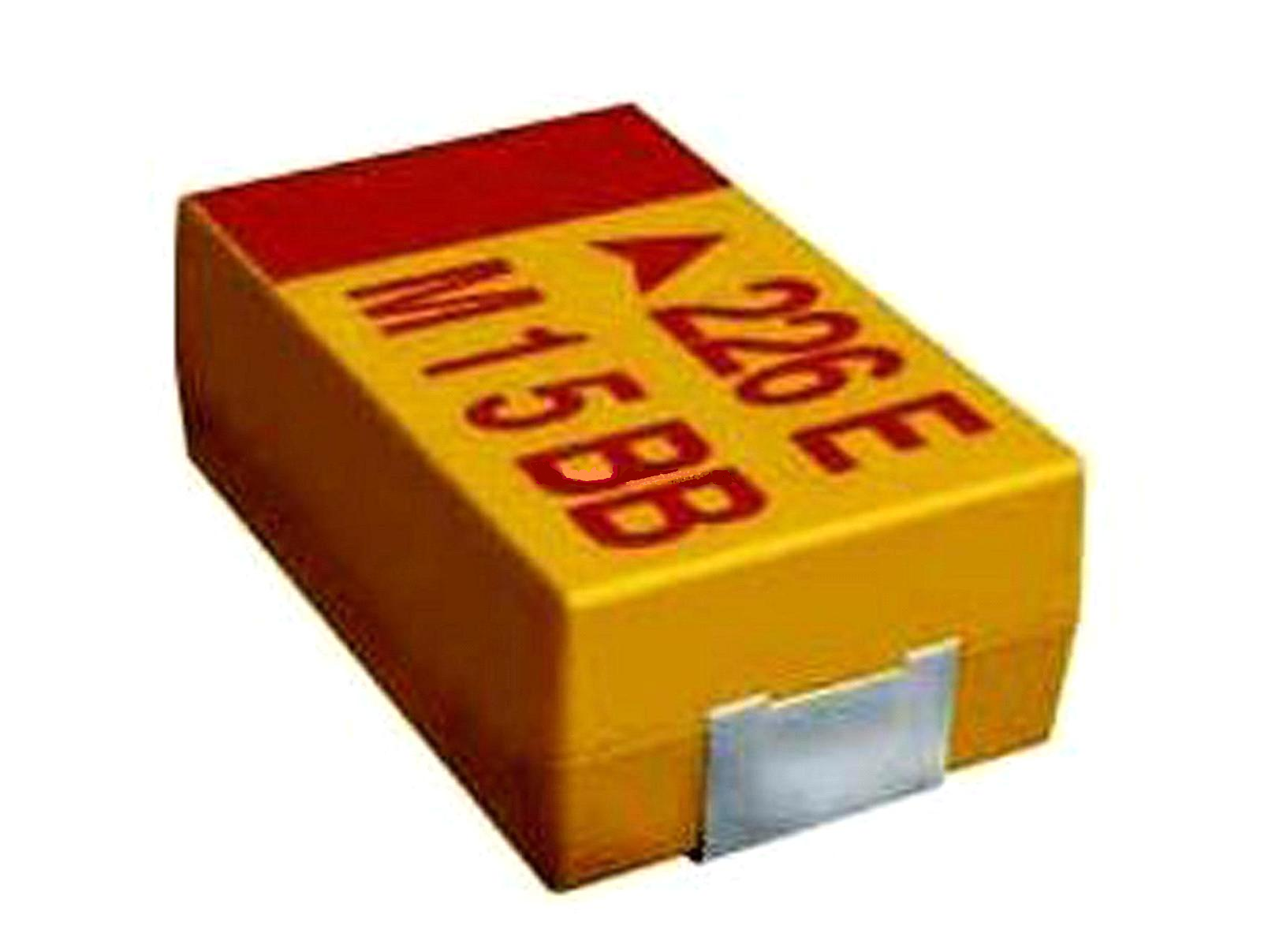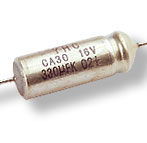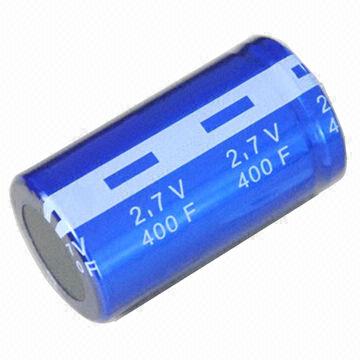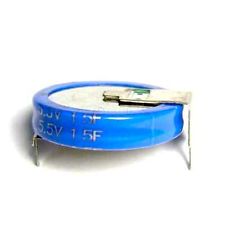Tantalum:
Tantalum electrolytic capacitors are a step up from aluminum capacitors. They come in a number of types with different
advantages, but in general, they have smaller size, lower leakage, lower dissipation factor, lower ESR, more stable
capacitance over temperature, and good service life. Tantalum capacitors aren't made in the monster sizes that aluminum
capacitors are, but are available to several hundred µF in common voltage ratings (to about 100 volts) and to several
thousand uF at low voltage (6-10 volts).
The first tantalum capacitors were made from tantalum foil with a sulfuric acid electrolyte. Foil tantalums are made for
use to at least 300 volts, and to 125C. They are made in both industrial and military styles but their usage is probably
mostly military. Foil tantalums are now rare however, and seem be out of production.
The foil anode is a poor use of what is an expensive metal, and not in good supply. Most modern tantalum capacitors
are what are called "slug" capacitors. Tantalum powder is sintered into a porous yet strong slug, with a tantalum wire,
which forms the anode of the capacitor. The many small particles produce a very high surface area. A variety of particle
shapes are used, depending on the operating voltage, and making them is a science in itself. A layer of tantalum
pentoxide (Ta2O5 with a K of about 25) is grown over the particles for the dielectric. In one version of the capacitor,
the electrolyte is gelled sulfuric acid. This is called a "wet-slug" and, as you can imagine, it must be well sealed. Wet-slug
tantalums are the capacitor of choice for some applications, especially at very high temperatures (to 200C for some,
often with derating). They are available for up to 900 volts operation. Construction details vary.
The vast majority of solid tantalums are the "dry-slug" or "solid tantalum" capacitors. A layer of manganese dioxide
(MnO2) is layered over the pentoxide followed by a layer of colloidal graphite and a layer of silver paint. There are minor
variations on this. With no liquid involved, they can be sealed with just an epoxy dip, although the better ones may have
a molded body. The pentoxide layer is prone to defects, and the key to the solid tantalum capacitor's reliability is that the
MnO2 provides self healing. If a flaw in the pentoxide layer develops, the leakage will cause localized heating in the
MnO2 and convert it to Mn2O3 , a much less conductive oxide, sealing off the flaw. This mechanism is not perfect,
however, and failures due to dielectric flaws have been a traditional problem for solid tantalums. If the temperature of
the pentoxide gets high enough, about 500C, the pentoxide converts from its nonconducting amorphous form to its
conducting crystalline form and the capacitor goes up in flame. Solid tantalums aren't usually made with high working
voltages because the particle size limits the dielectric thickness that can be grown; 50 volts is usually the upper limit.
There are however, a very few solid tantalums with working voltages as high as 125 volts. Most dry tantalums are rated
to no more than 85C to 125C, but a few are rated for use to 175C with voltage derating. Solid tantalum capacitors are
commonly available in surface-mount packages, in molded bodies.
A weakness of slug tantalums is high-frequency performance. Depending on construction details, the capacitance can fall
to 50% in the 100-200 kHz region, compared to 1 kHz. Lower ESR parts can be made using larger particles (although
at the expense of somewhat lower capacitance) and by various manufacturing refinements.
A rarely mentioned characteristic of solid tantalums is their rapid decline in leakage current. When both aluminum and
tantalum electrolytics are powered up, their leakage current starts high, but declines over time. For aluminums, leakage
take minutes to decline to a stable value. For tantalums, this occurs in seconds.
Even though "dry-slug" tantalums are not wet-chemistry devices, they are still polarized. Although many sources claim
that dry tantalums are very sensitive to reverse bias, they can actually to be very slow to fail when reverse biased. In fact,
failure of tantalums installed backwards may occur from seconds to more than a year after manufacture.
Because of the growing popularity of tantalum in miniature electronic equipment, tantalums (mainly SMD) have diverged
into a number special types. They include:
•High temperature, to at least 200C with voltage derating, MnO2.
•Low ESR using specially sized powders and multiple anodes.
•Miniature package sizes.
•Very low height. Standard SMD tantalums are 1.9 to >4 mm in height. Low profile are 1.2 or 1.5 mm.
•Fused, for power supply bypassing on digital boards.
•Tantalum capacitors with the semiconducting polymer "electrolyte" TCNQ have appeared. Sanyo, for one,
makes them under the POSCAP name. See Sanyo OS-CON capacitors above. They tend to have the same
advantages as their aluminum cousins, including lower ESR and flatter temperature characteristics.
Manufacturers also claim that they can fail without bursting into flame. A new conductive polymer, PEDOT has
also appeared, see above.
Companies that advertise wet-electrolyte tantalum capacitors include:
Mallory Gone.


